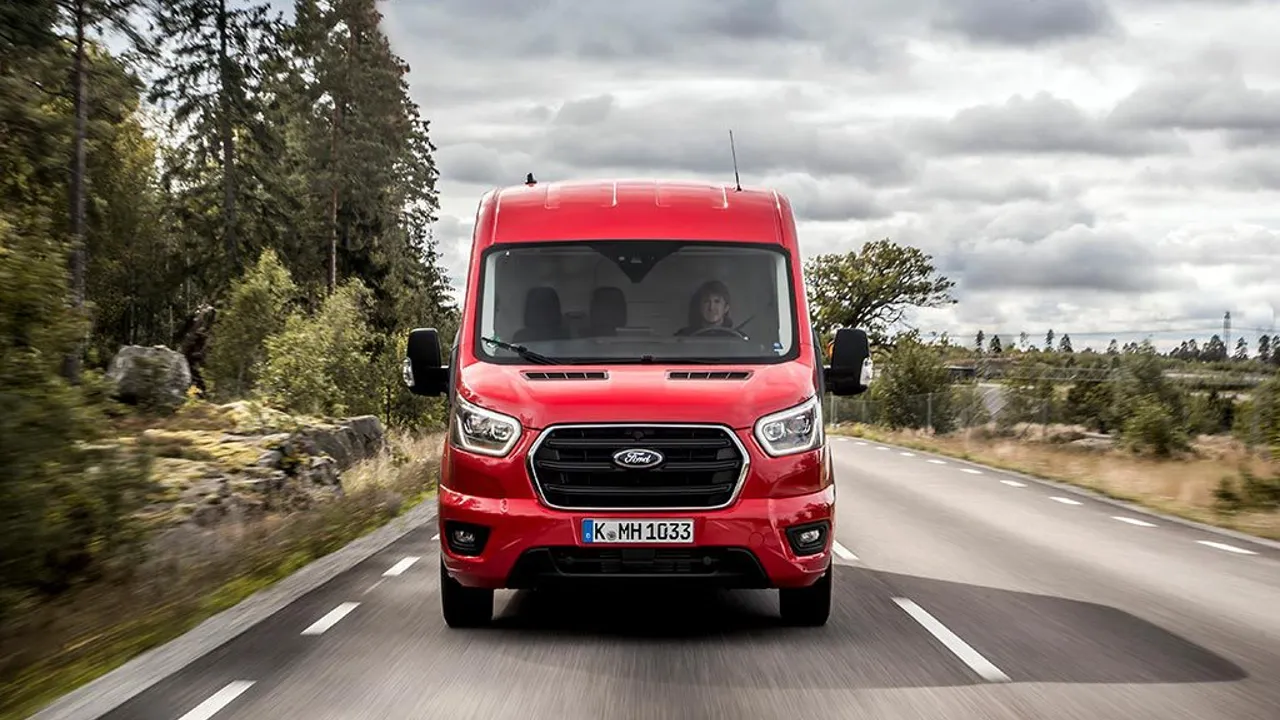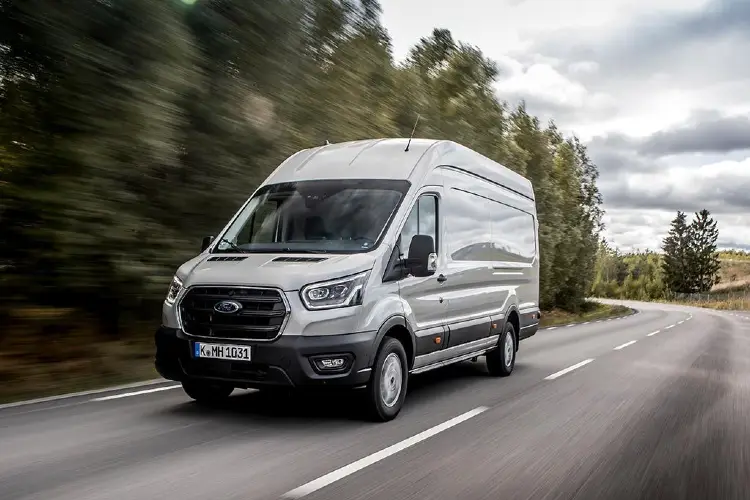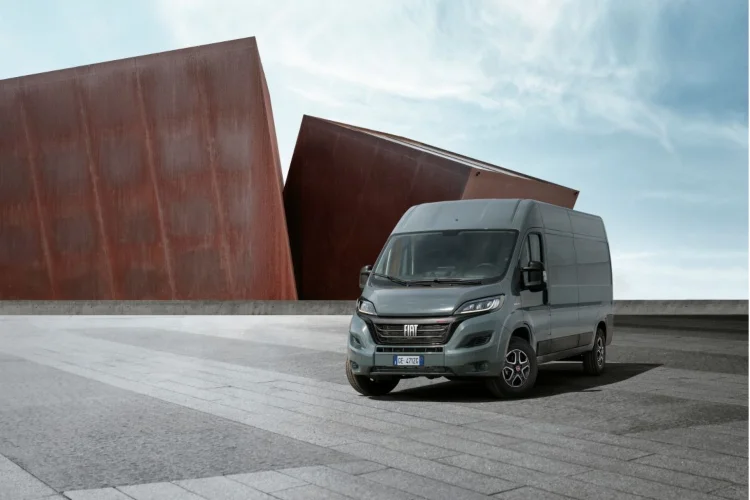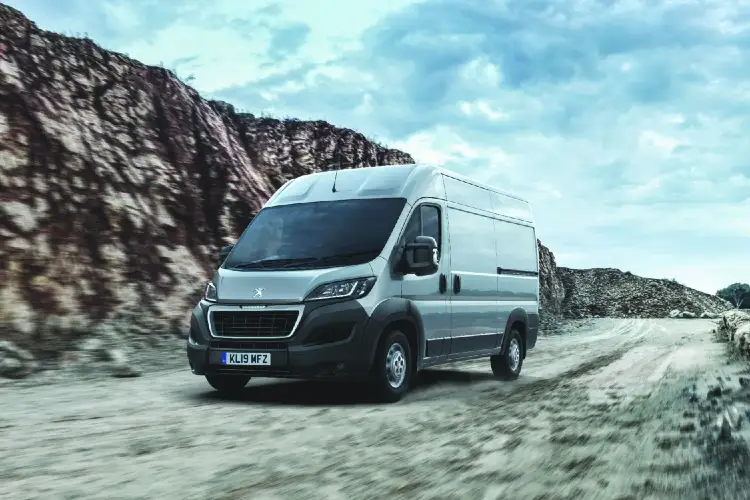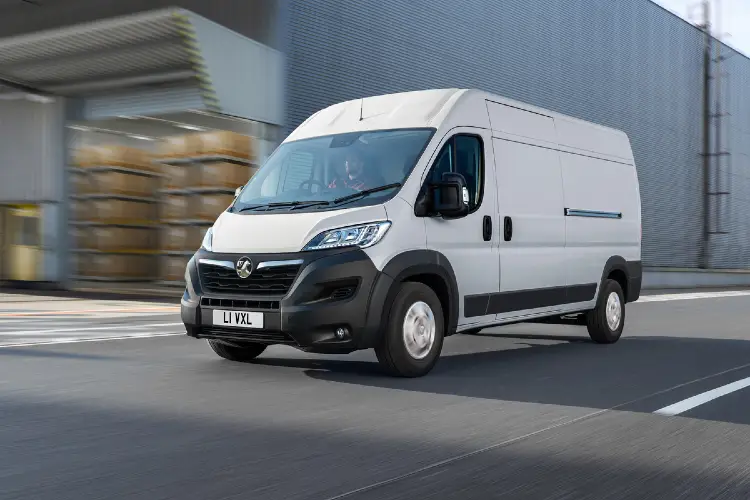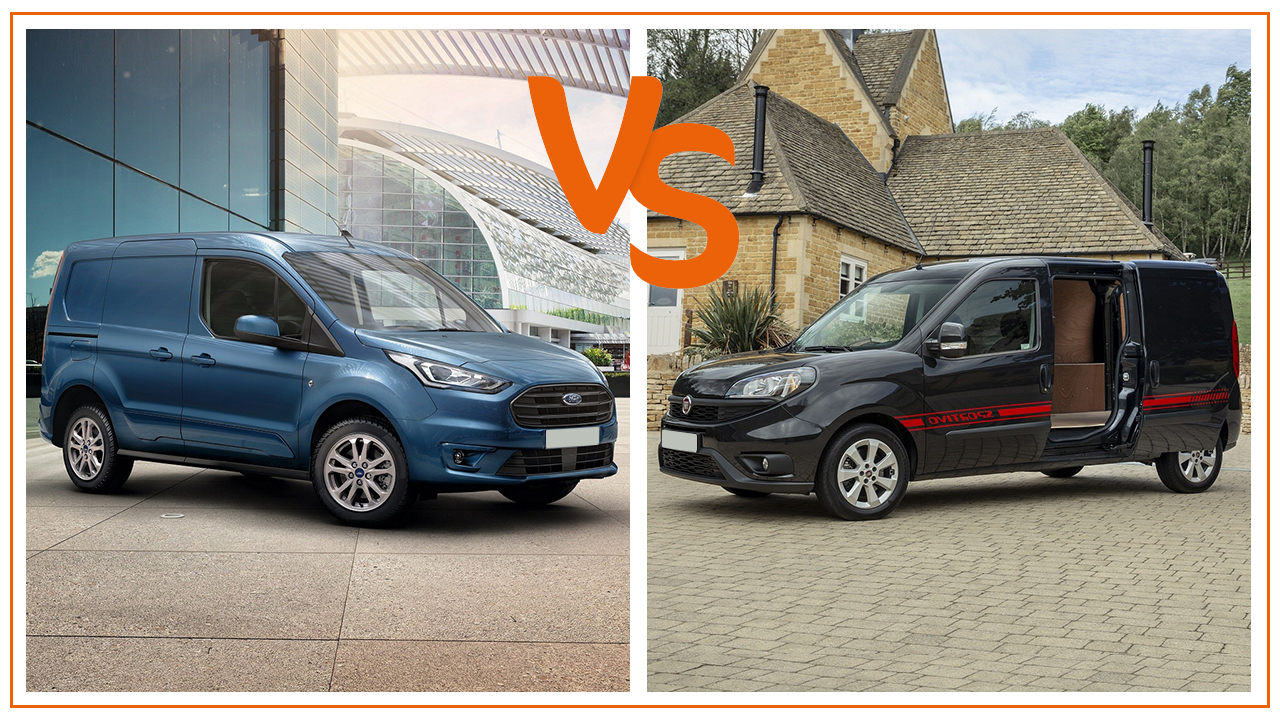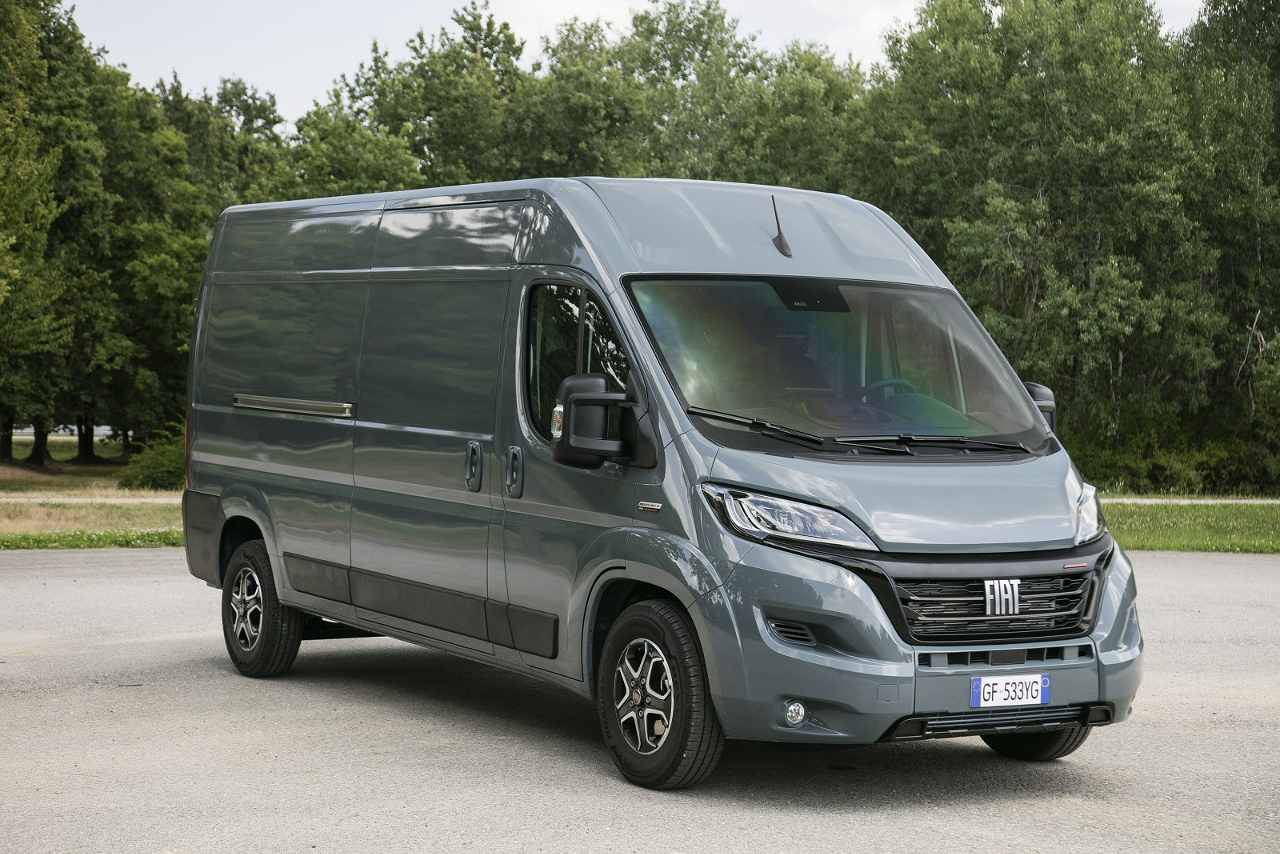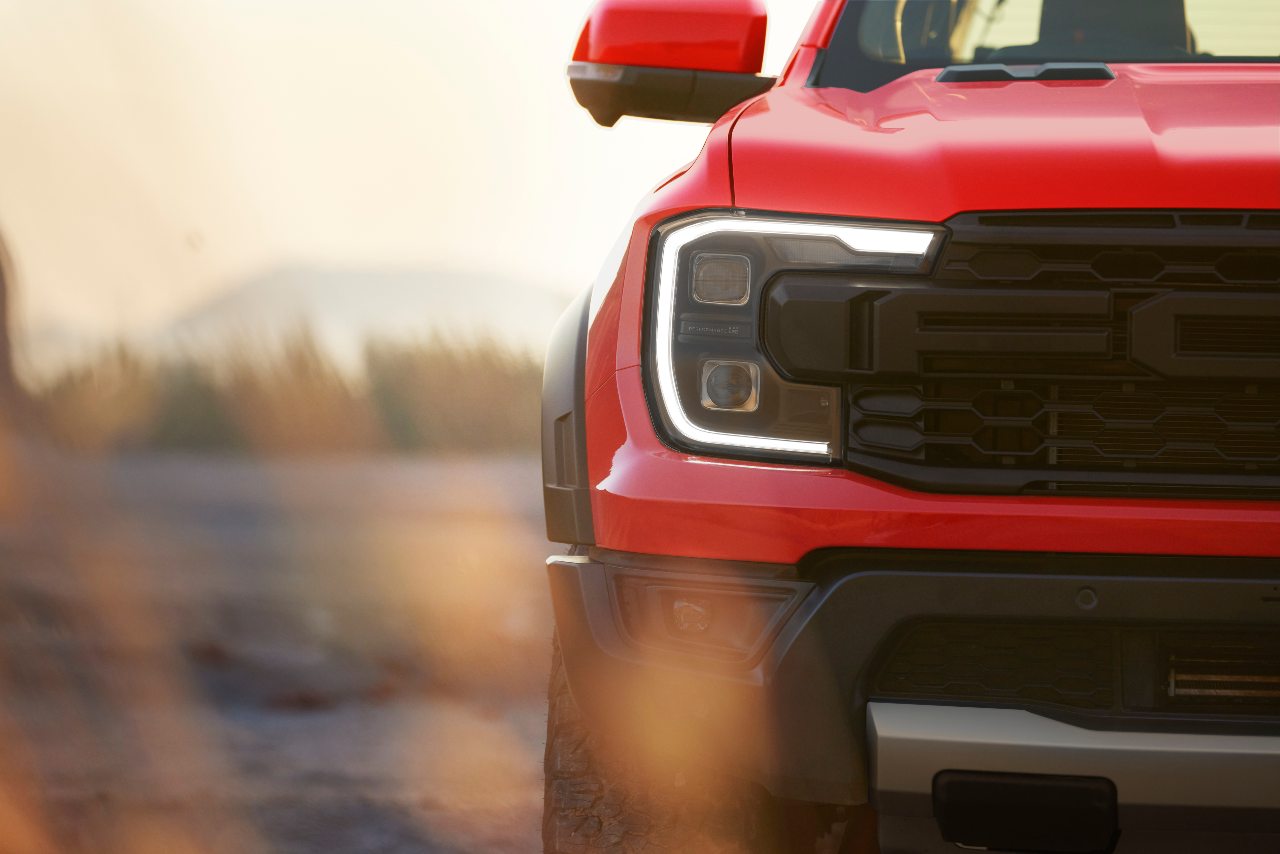By Tom Roberts Last Updated 14/7/23
Large vans get judged on their ability to haul bulk rather than weight (although some of them can haul heavy weights), but fuel efficiency is always next on the list. Customers want to lease a van that will keep them moving for a reasonable amount of money, but sometimes it can be hard to know where to start the search. Vanarama Van Expert Tom Roberts has done the research to show you the five large vans offering the best return on fuel costs.
Considering the work they're designed to do - typically transporting big, heavy cargo loads long distances - it's no wonder there are so many large vans on UK roads. While many large vans work in the fleets of major multinationals, there are many single-van tradespeople who opt for vehicles on the larger side. But no matter how big a business is, return on investment - and specifically return on fuel expenditure - is a key consideration when choosing which large van to drive.
Most large vans feature the same things these days - comfortable cabins, infotainment systems, air con and more - so finding key points of difference between them to help you pick the one you want to drive is important. After payload ratings and load volume, I believe fuel efficiency is the next best way to do that in the large van marketplace. So, let’s take a look at the top 5 large vans with the best fuel efficiency available in the UK today.
Just A Note On The Figures
Before we get going, all of the stated MPG ratings I've used in this list are the official WLTP figures. Any other figures stated - e.g. for torque - are taken from manufacturer sources. Some manufacturers quote ‘best’ and ‘worst’ figures achieved on the combined cycle, so in those cases I’ve taken a midpoint. Where manufacturer data is unobtainable, figures have been obtained from tables published in WhatVan? magazine, in turn supplied by data firm Glass. Finally, figures for large vans can vary widely within their own range, depending on the size and weight of the van, and which engine powers it. To better serve this list, I’ve taken the most economical model I can find as my example.
The Top 5 Most Economical large Vans
1. Ford Transit – 43.5mpg
Leading the rest of the pack (by quite a margin) is the iconic Ford Transit when fitted with the 105PS Ecoboost Euro 6.2 diesel engine. Ford has been very vocal in just how efficient this engine is, and the class-leading fuel economy is a great indicator. Despite its relatively low power output, 310nm of torque should make urban driving a breeze and, with a CO2 output of 221g/km, the Transit is one of the cleaner large vans out there.
2. Fiat Ducato – 34.4mpg
Previously, Fiat has used its own engines in the Ducato rather than the units utilised by Stellantis cousins Peugeot and Citroen in this shared large van platform. In its latest award-winning incarnation, the Italian manufacturer has finally towed the group line and now fits the same, 2.2-litre engines branded with the ‘Multijet’ name. Possibly due to the way the figures have been presented, but also as a result of some minor tweaks, the Fiat has edged ahead of its French siblings in my top 5 list. The 120hp version that achieves this excellent result has a CO2 emissions figure of 220g/km - the lowest emissions of any van here, just pipping the Transit to the winning post. If torque is critical to your operation, then you’re unlikely to be disappointed with the 320nm on offer here.
3. Mercedes-Benz Sprinter- 32.8mpg
An excellent result for the Mercedes-Benz Sprinter here, and although this is the figure for the smallest van in the range, the 215 L1H1, even the huge 317 L4H2 manages a combined result of exactly 30mpg - impressive indeed. What makes this notable is that the power output from the 215’s 2.0-litre diesel engine is 150hp, considerably more than the Transit and Ducato, and the torque figure of 340nm is also higher. CO2 emissions are 225g/km. I think Mercedes-Benz has done a great job - the Sprinter has a reputation for ruggedness and reliability, and if you throw in the efficiency proven here, it’s a very strong proposition for the cost-conscious business.
4. Peugeot Boxer / Citroen Relay – 32.8mpg
Sharing joint third spot with the Sprinter are the Stellantis twins from France, the Peugeot Boxer and Citroen Relay. If you’re needing the best combination of payload and loadspace, but also want to keep a careful eye on running costs, these vans are the ones that demand your consideration. The engine that achieves this figure is the 120hp option of the 2.2-litre diesel unit, although producing slightly less torque than Fiat's modified version at 310nm. Interestingly, these engines are quoted as being Euro 6.4 compliant, something that is rare to see in the van world and could possibly make the van a little more future proof. For the record, CO2 is quoted as 273g/km, perhaps not the best out there.
5. Vauxhall Movano – 32.3mpg
A favourite with tradespeople, the Vauxhall Movano no longer shares its platform with the Renault Master - Vauxhall is now part of the Stellantis group (since 2019) and the Movano is now another clone of the Peugeot Boxer, Citroen Relay and Fiat Ducato. Although the same 120PS version ‘only’ returns 31mpg, which would put it just outside our top 5, the 140PS engine manages 32.3mpg and CO2 emissions of 240g/km. Unfortunately, Vauxhall is not currently quoting torque figures, but my guess is that it will be the same as the Peugeot and Citroen engines of the same power which provide 340nm.
How is MPG calculated?
The stated MPG ratings used in this article are the official WLTP (Worldwide Harmonised Light Vehicle Testing Procedure) figures that all manufacturers have to quote in their promotional material. All vehicles are put through the same tests to allow potential customers to make comparisons between models.
Lots of real-world factors can bring this figure down when a large van is in daily use. Payload, weather conditions and driving style are all impactful, which means the real value in these quoted MPGs is for benchmarking one van against another. As an interesting side note, WLTP figures are generally lower than the NEDC stats. Vans haven’t become inefficient, it’s just that a new way of calculating consumption has been introduced.
Tom’s Takeaways
The UK Government's declared strategy that combustion engines will cease being sold by 2030 in favour of electric vehicles means that MPG ratings now have a shelf life of only 7 years. But a lot can happen in 7 years and if you're choosing a new van to drive right now then fuel costs are naturally a key deciding factor.
The vans above are the best for MPG in the large van sector, but what's best is that you have a range of choice here. Need payload and loadspace? The Stellantis family could work for you. Volume over everything else? Look at that L4 Sprinter, it’s massive. But if you’re wanting the reassurance of a true legend in the large van world, then how about our winner in this top 5, the Ford Transit? My point is that the large van sector is as rich in choice as the entire van sector itself. You'll find a van that works for you and for your business here.
Looking for something smaller? Check out our experts picks for the most economical medium vans, or see our best van leasing deals available today.
Economical Large Van FAQs
Q1: Which fuel types offer the most MPG and why?
Diesel vans are usually more economical than their petrol counterparts, because diesel fuel produces more energy than the equivalent amount of petrol and the combustion process is more efficient.
Q2: Does my driving affect my van’s MPG?
Yes it does. Hard acceleration and braking, for example, will eat into your fuel tank.
Q3: How can I drive more economically and save fuel?
Smooth driving, anticipating when you need to brake, gentle acceleration, lower top speeds and less hard acceleration will all reduce fuel consumption. Drive like you’ve got a bowl full of water on the passenger seat that you really don’t want to spill - you’ll notice the difference almost immediately.
Q4: What is the difference between WLTP and NEDC?
WLTP superseded NEDC (New European Driving Cycle, which dated back to the 1980s) to provide customers with MPG figures that would be closer to those achievable with real-world driving. Where NEDC figures were generated using just a single driving cycle, WLTP uses dynamic cycles depending on the type of vehicle being tested.
Q5: What are Euro 6 standards and why do they matter?
Euro 6 emission standards are the latest regulations set in place to govern acceptable and unacceptable levels of emissions from diesel engines. With the advent of low emission zones in our towns and cities, a van that doesn’t comply with Euro 6 or above regulations will find it increasingly difficult to enter these areas without a financial penalty. This is why it makes sense to lease a new van - you can be sure that it will comply with the latest emissions rulings.
For more reviews, insights, comparisons and help with choosing your next vehicle take a look at our Van blog. If you’re ready to browse, take a look at our best large van leasing offers.

